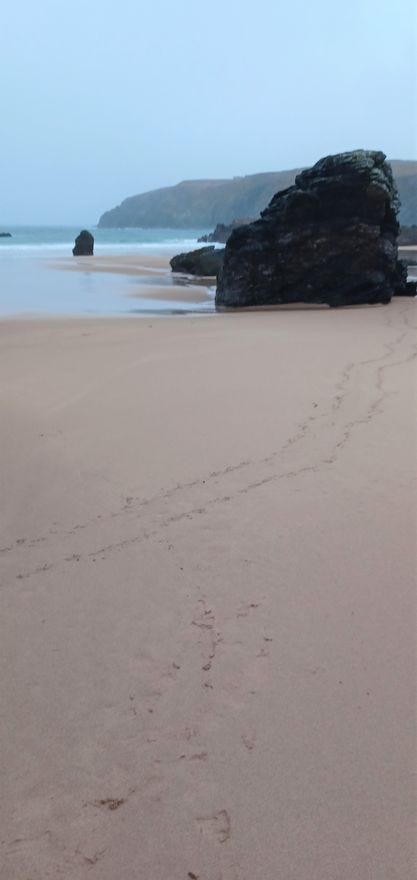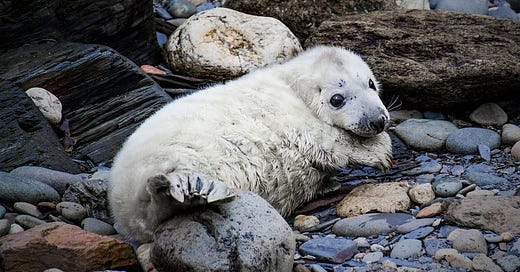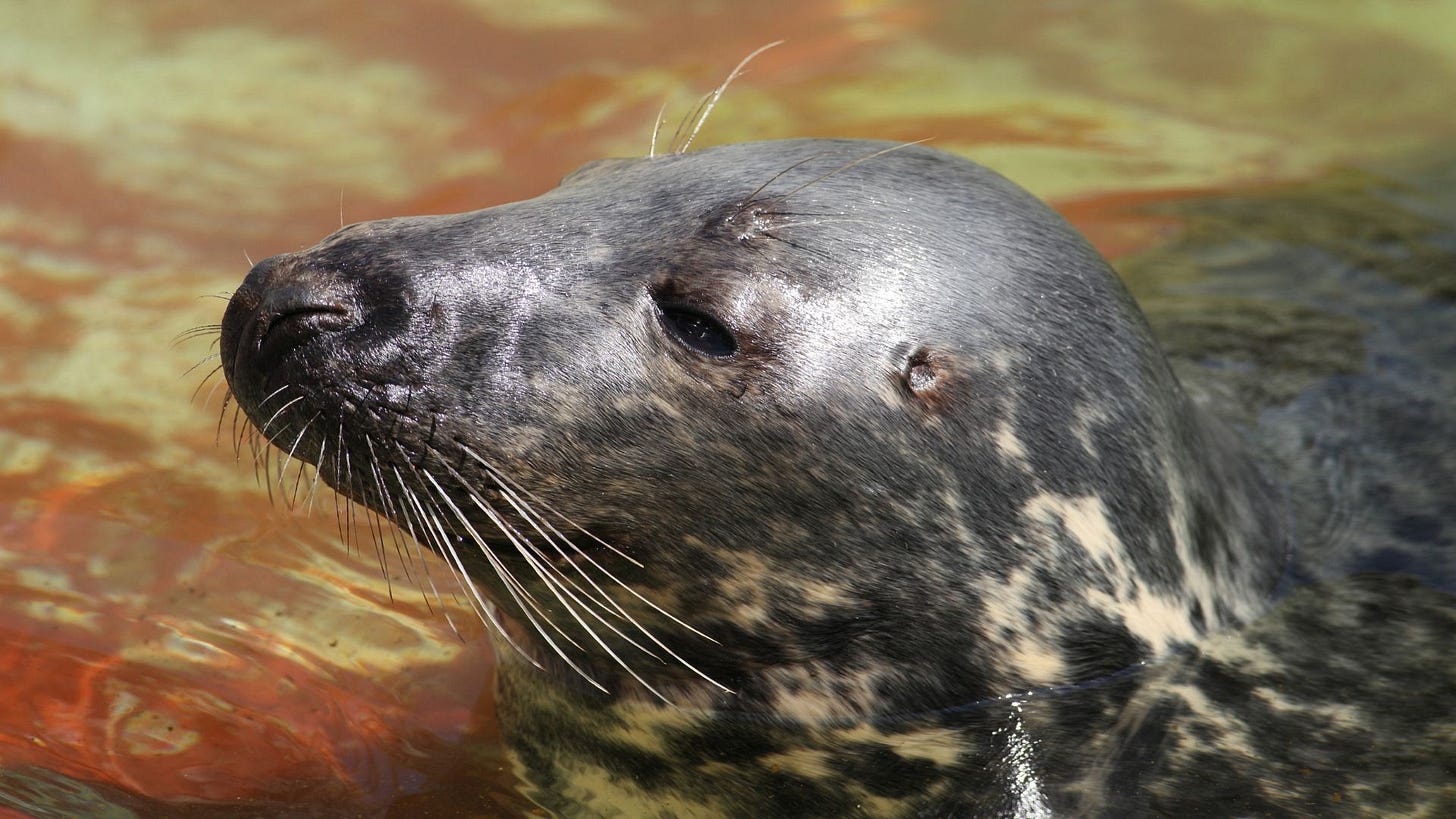As fate would have it, not long after my musings on the lack of stranded seal pups around Durness this season in my Earlier Blog, nature decided to present a surprise. A local resident reported a seal pup on the coast, sparking a new chapter in my continuous exploration of the wildlife in North West Sutherland.
The Unexpected Visitor: A Healthy Seal Pup
The seal pup, found lounging on the sands, was a picture of health – round, tubby, with clear, alert eyes. It seemed likely that its mother was somewhere in the bay, keeping a watchful eye. In such cases, the best course of action is to observe from a distance and avoid any interference, as maternal seals often leave their pups ashore while they forage at sea.
Observing Nature's Path: A Return to the Sea
Later, I revisited the site and was greeted by the sight of tracks marking the seal pup's journey. The distinctive double lines of its flippers were etched in the sand, a natural testament to its brief sojourn on land before returning to the ocean. This natural event was a beautiful reminder of the cycle of life along our shores.


The Importance of Responsible Wildlife Interaction
This encounter serves as an important reminder about interacting responsibly with wild animals, especially seal pups. While it's tempting to intervene, we must remember that human interaction can often do more harm than good. Seal pups should only be handled if they are clearly in distress – exhibiting signs like being very skinny, unresponsive, or having mucous from the nose and eyes.
In such situations, it's crucial to contact trained professionals. The British Divers Marine Life Rescue (Tel: 01825 76554) and the Scottish SPCA (Tel: 03000 999 999) are equipped to handle these delicate situations, ensuring the well-being of these beautiful marine creatures.
Read on for a deeper insight into Grey Seals…….
A Rich Habitat: The Seals of North West Sutherland
The coast of North West Sutherland is a thriving habitat for seals, including both grey and common seals. These creatures play a vital role in the marine ecosystem and are a joy to observe in their natural environment. Understanding their behaviour and respecting their space is key to ensuring their continued survival and well-being.
Grey seal mating season at Witenhead is a remarkable natural event, characterised by the congregation of approximately 300 breeding males and females. This gathering occurs annually from October to November, and during this period, the seals engage in a complex and fascinating mating ritual. The males, large and powerful, compete for dominance and the opportunity to mate with the females. The females, meanwhile, are focused on nurturing their newborn pups.
Ancestral Coats in a Changing Habitat
The pups are born with a unique white coat, known as a lanugo. Initially, this coat might have evolved as a camouflage strategy in snowy and icy environments, blending in with the surroundings to protect the pups from predators. However, even though the habitat at Witenhead is no longer characterised by these conditions, the pups still exhibit this ancestral trait. This phenomenon where a species retains an ancestral characteristic that may no longer serve its original purpose is known as an evolutionary vestige.
This protective colouring is crucial for the pups during their most vulnerable stage of life. Intriguingly, the pups only stay with their mothers for a brief period of about three weeks. In this short but critical time, they are nursed and rapidly gain weight, thanks to the rich, fatty milk provided by their mothers. After this period, the pups are left to fend for themselves, and they undergo a dramatic transformation. Their white coat is shed, and a sleek, waterproof layer of fur grows in, preparing them for life in the cold waters
Historically, the pelts of these grey seal pups were highly valued for their unique white colour and were sought after for various uses. The rarity and beauty of the white fur made it a prized possession. However, over time, with our changing attitudes towards wildlife conservation and the implementation of protective measures, the hunting of these seals, particularly for their pelts, has drastically reduced, allowing populations to thrive and continue their life cycle undisturbed in places like Durness.
My unexpected encounter with the seal pup not only provided me with a moment of awe, for myself, but also reinforced the importance of coexisting with and preserving our natural world. As we tread lightly along these shores, we become silent witnesses to the wonders of nature, constantly learning and growing in our appreciation of the world around us.
I will be next leading a leisurely walk around Scourie this Wednesday 13th Dec. Visit our eventbrite page to book on this and other events around Highlands
Donald, a keen observer of nature and wildlife, dedicates his time to documenting and sharing insights about the natural habitats in North West Sutherland. With a particular interest in marine life, he aims to help others gain a deeper understanding and respect for the delicate balance of our ecosystem.








